|
This page shows the resampling spurs that are produced when
a time function is produced by back transformation of a part
of a fourier transform.
The images are produced with linrad00-21 running at 44100Hz sampling speed for a single real signal. The signal is produced by an audio generator set close to A/D board saturation. The audio board is a Delta44.
|
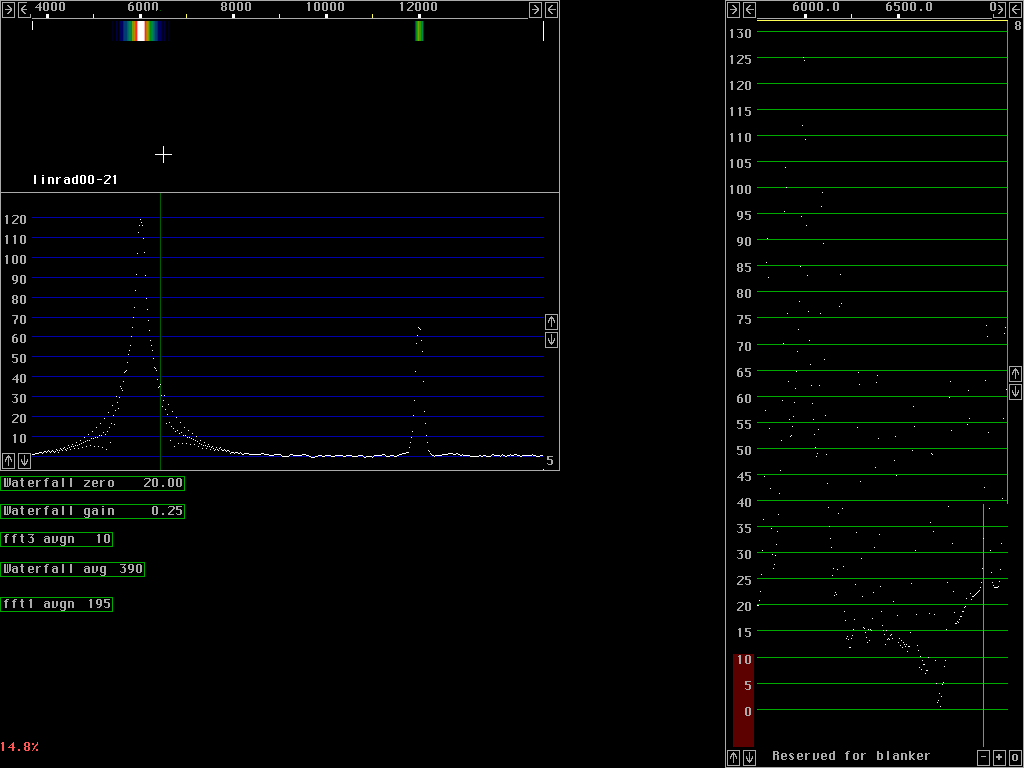
|
|
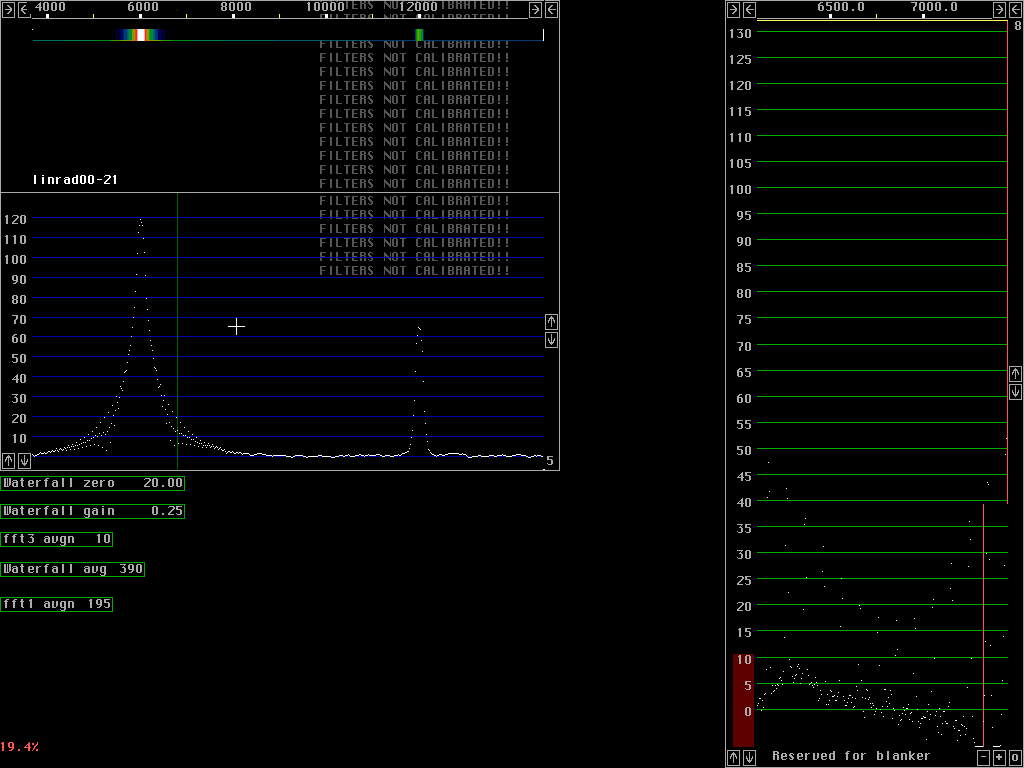
|
Figures 1 and 2 show that a selected bandwidth of 200Hz gives a 100dB spur suppression at about 1.5kHz when the decimation rate is 16. Figures 3 and 4 show how the resampling spurs grow when an inadequate window is used. A dynamic range of 90 dB at a frequency offset of 2.5kHz is not really bad. Most CW signals transmitted by radio amateurs have wider spectrum than that!
|
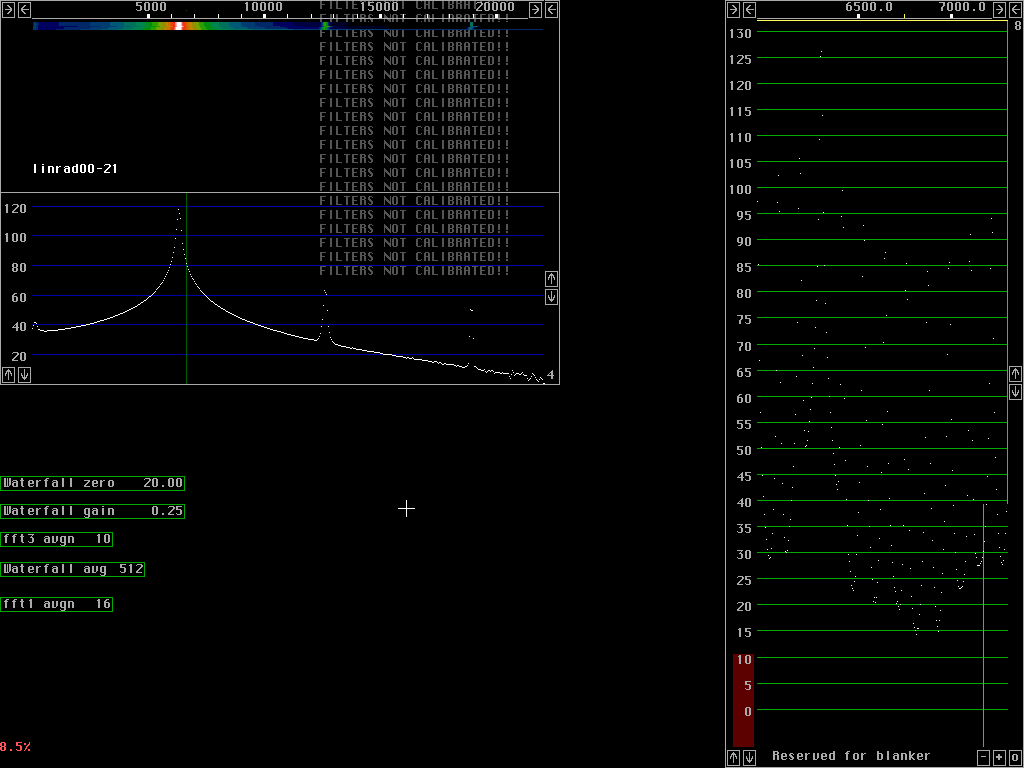
|
|
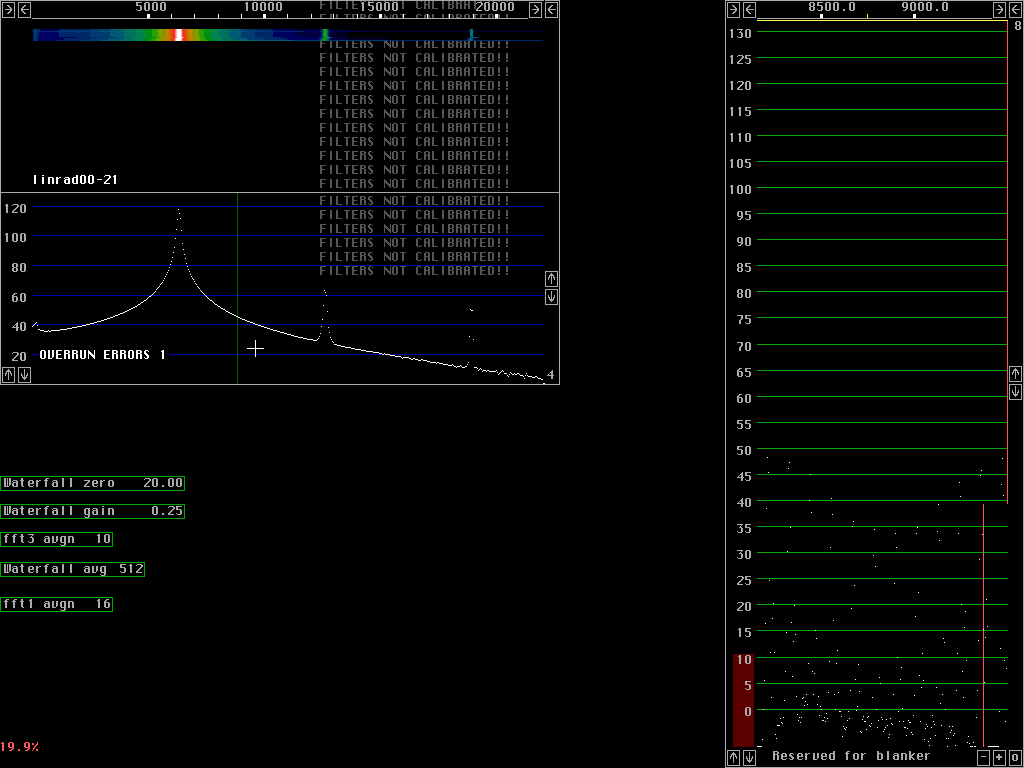
|
Figure 5 shows the influence of the resampling rate. By picking a larger part of the spectrum one can suppress the resampling spurs. The part of the spectrum picked for back transformation is first filtered through a filter that attenuates frequencies at the ends of the spectrum. This simply means that the fourier bins are multiplied by a window function. This window is flat in the center region and the fall off becomes softer if a larger fraction of the original transform is selected.
|
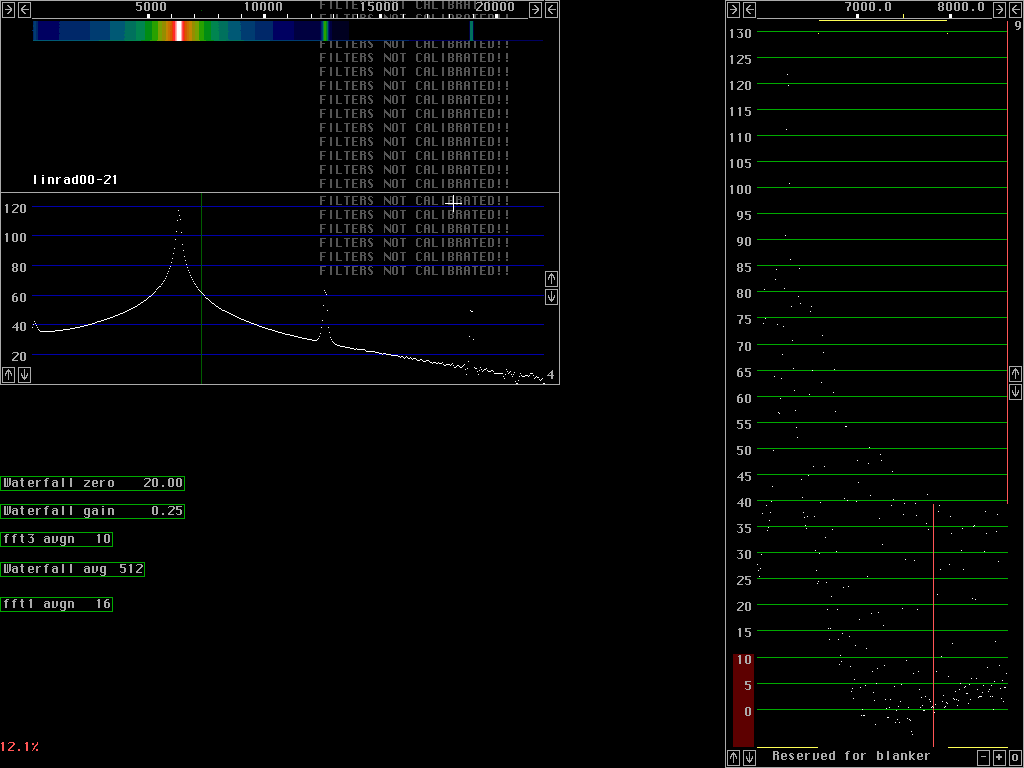
|
Figures 6 and 7 show that with a normal bandwidth, required to locate weak signals, a sine squared window is more than adequate to suppress the resampling spurs.
|
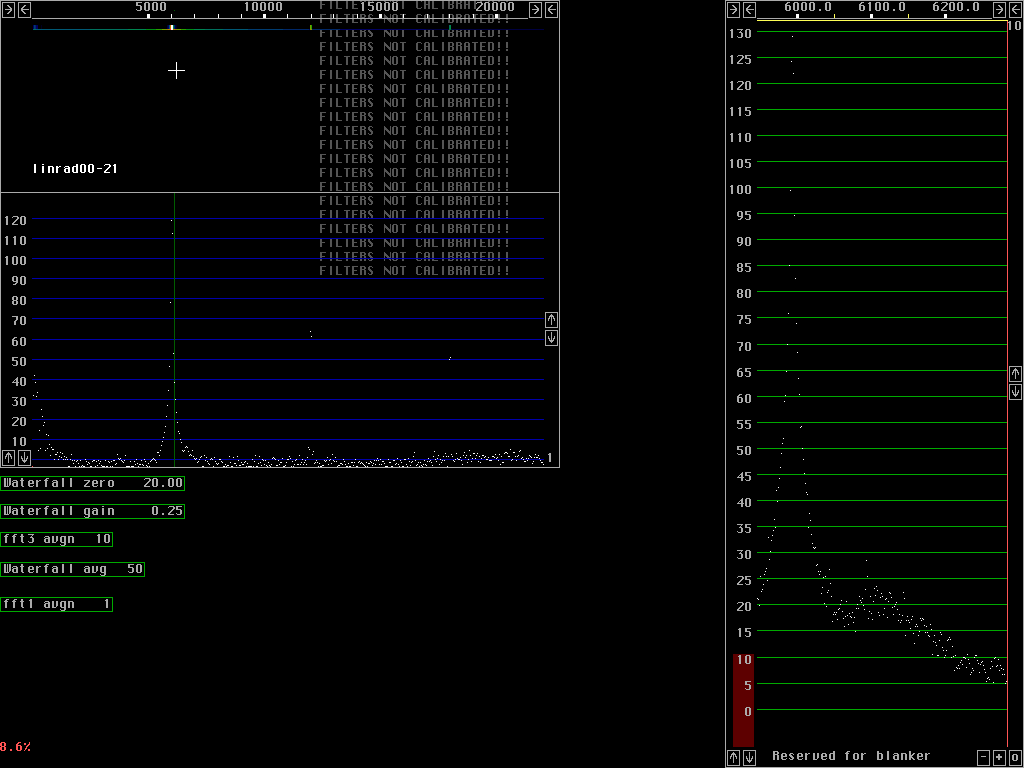
|
|
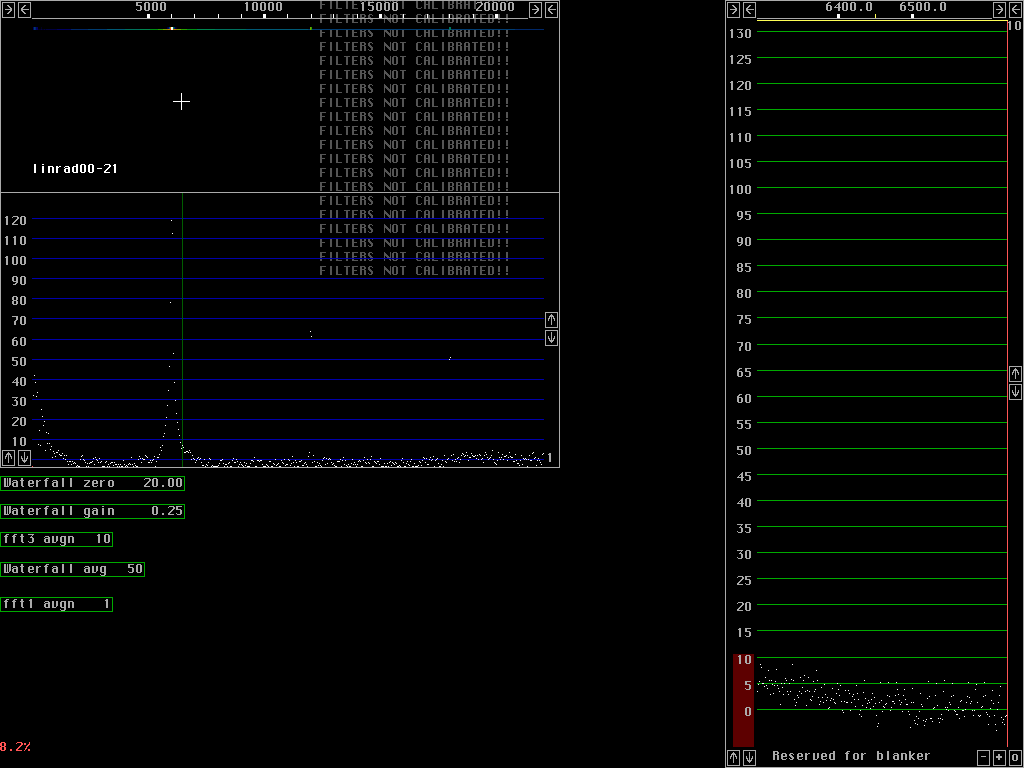
|
|